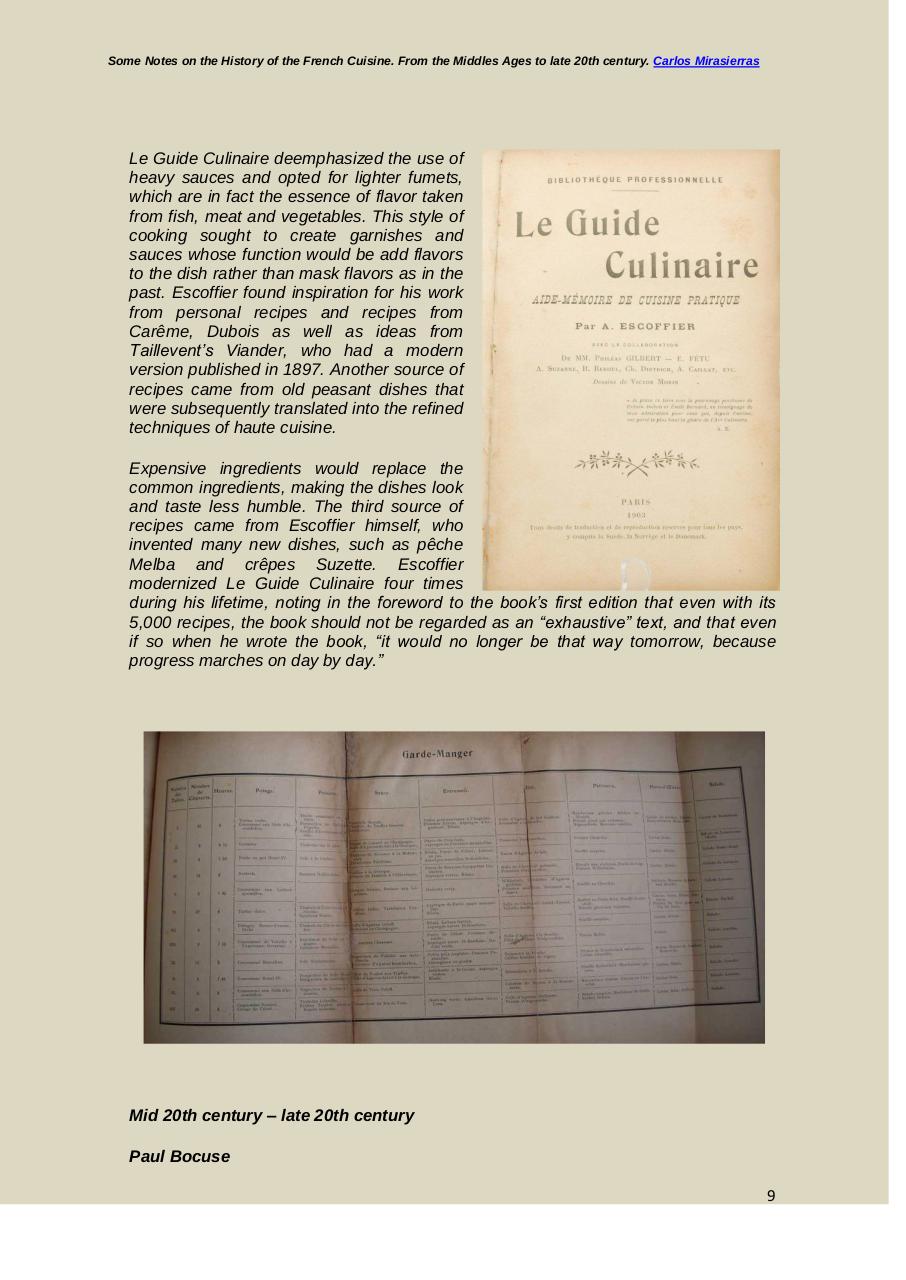Some Notes on the History of the French Cuisine. Carlos Mirasierras.pdf

Vista previa de texto
Some Notes on the History of the French Cuisine. From the Middles Ages to late 20th century. Carlos Mirasierras
Le Guide Culinaire deemphasized the use of
heavy sauces and opted for lighter fumets,
which are in fact the essence of flavor taken
from fish, meat and vegetables. This style of
cooking sought to create garnishes and
sauces whose function would be add flavors
to the dish rather than mask flavors as in the
past. Escoffier found inspiration for his work
from personal recipes and recipes from
Carême, Dubois as well as ideas from
Taillevent’s Viander, who had a modern
version published in 1897. Another source of
recipes came from old peasant dishes that
were subsequently translated into the refined
techniques of haute cuisine.
Expensive ingredients would replace the
common ingredients, making the dishes look
and taste less humble. The third source of
recipes came from Escoffier himself, who
invented many new dishes, such as pêche
Melba and crêpes Suzette. Escoffier
modernized Le Guide Culinaire four times
during his lifetime, noting in the foreword to the book’s first edition that even with its
5,000 recipes, the book should not be regarded as an “exhaustive” text, and that even
if so when he wrote the book, “it would no longer be that way tomorrow, because
progress marches on day by day.”
Mid 20th century – late 20th century
Paul Bocuse
9
